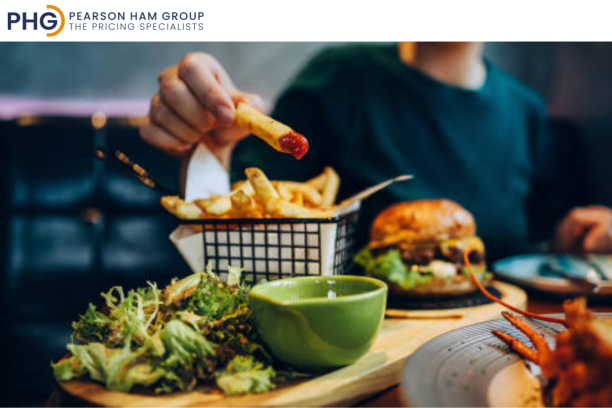
Stéphane Wald, founder of TippsMe and advisor to Pearson Ham Group was interviewed by Antonio Agustín, FSI Director and published in Caternews Digital
Stéphane Wald spent a significant part of his professional career at McDonald’s: almost 20 years in France and more than 7 years in the European Business Unit. He started in finance, working in management control, before co-founding the Business & Consumer Insight division and later leading the business analytics and measurement department. This unique role allowed him to combine financial data analysis with insights into consumer behaviour. On pricing strategy, differentiation and the challenges faced by the fast food sector, he explains in this interview.
I spent a significant part of my career at McDonald’s—nearly 20 years in France and over 7 years in the European Business Unit. I started out in finance, working in management control, before co-founding the Business & Consumer Insight division and later leading the Business Analysis & Measurement department. This unique role allowed me to combine financial data analysis with insights into consumer behavior.
It was a natural progression for me to specialize in pricing strategy, especially during the transition to the euro. That period was a pivotal moment when I truly understood the impact pricing decisions can have—not just on financial performance, but also on how consumers perceive a brand.
Pricing strategy has always been a cornerstone of any successful business, but it’s even more important in today’s fast-paced and competitive market.
I like to say that pricing is both a Science and an Art.
Pricing operates at the intersection of marketing, consumer insights, and finance. It’s the ultimate tool for balancing competitiveness and profitability. A well-executed pricing strategy doesn’t just protect margins—it aligns your value proposition with your target audience.
France’s move to mandatory reusable packaging in 2023 was a significant milestone. It has added costs for restaurant operators—buying reusable containers, managing logistics, cleaning, and keeping inventory in check. However, it also aligns with a growing consumer demand for sustainable practices, enhancing a company’s eco-friendly image.
Other countries are already moving in this direction. For instance, Germany has implemented similar measures, and in Spain, while reusable packaging isn’t yet compulsory, the introduction of a single-use plastic tax in 2023 signals a clear push toward sustainability. It’s only a matter of time before more European markets adopt similar regulations, driven by EU-wide policies supporting a circular economy.
For restaurateurs—whether in Germany, Spain, or elsewhere—anticipating these changes is key to staying competitive. What might initially feel like a burden can become a strategic opportunity to stand out. For instance, slightly raising prices while clearly communicating the environmental benefits of these changes could offset costs while reinforcing a brand’s commitment to sustainability.
As Warren Buffett once said, “Price is what you pay; value is what you get.”
Value is all about the customer’s perception of the overall experience. Consumers are willing to pay more when they feel the price reflects the value they’re getting.
Here are two examples:
At Pearson Ham Group, my role is to bring my expertise to clients, helping them craft pricing strategies that adapt to market shifts. The aim is to optimize pricing decisions by balancing costs, consumer expectations, and external factors like regulatory changes—all while maximizing profitability.
My biggest piece of advice is this: don’t underestimate the strategic importance of pricing. It’s more than just a number—it’s a powerful lever to address today’s challenges, from boosting margins to navigating new regulations or differentiating in a crowded marketplace. However, there are important rules to follow. A price change—whether an increase or decrease—without clear insight can have disastrous consequences.
I’m reminded of a large coffee shop chain in Sweden. In 2023, they passed on inflation costs and raised prices by a flat 17% across the board, with no differentiation between sites or products. The results were catastrophic: traffic dropped by 17%, order compositions changed—fewer items were purchased, and customers switched to cheaper products. This is a classic example of “trade down” effect, the opposite of “trade up” I mentioned earlier. Ultimately, their sales fell by 1.3%, and their margin decreased by 0.8%.
We helped the brand recover from this situation by using more refined segmentation and conducting a sensitivity analysis across their sites and product range. We also worked with them to refresh their value proposition, including the creation of new product bundles.
This chain paid a steep price for a flawed pricing strategy. In some cases, price hikes may seem like a quick fix, but they can be a short-sighted, opportunistic move with long-term negative effects.
An effective pricing strategy is not just about offering the “right prices,” but also having sincere and transparent communication through a narrative that resonates with consumer expectations. This might involve:
Finally, don’t hesitate to seek external expertise to gain fresh perspectives, avoid costly mistakes like the one made by the coffee shop chain in Sweden,, and uncover unexpected opportunities. At Pearson Ham Group, we specialize in turning your pricing challenges into sustainable growth opportunities.
In a rapidly evolving landscape, a well-crafted pricing strategy is essential to address current challenges and prepare for the future. Whether you’re aiming to optimize your margins, meet new regulations, or stand out in your industry, Pearson Ham Group and I are here to guide you toward success. Do not miss the opportunity to know more at our special event with FSI in Madrid on February 27, 2025.